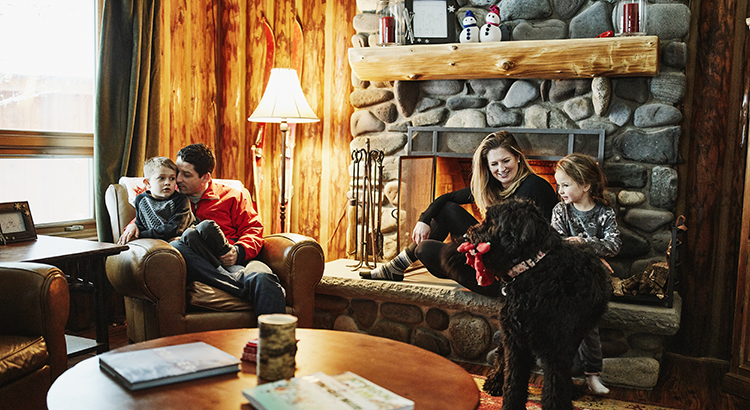Just Listed!
Beautiful, spacious home - ideal for multi-generational living.
3-bay garage plus RV garage
OPEN SATURDAY, 9/11, from 1-3pm
Just Listed!
Beautiful, spacious home - ideal for multi-generational living.
3-bay garage plus RV garage
OPEN SATURDAY, 9/11, from 1-3pm

If spending more time at home over the past year is making you really think hard about buying a home instead of renting one, you’re not alone. You may be wondering, however, if the dollars and cents add up in your favor as home prices continue to rise. According to the experts, in many cases, it’s still more affordable to buy a home than rent one. Here’s why.
ATTOM Data Solutions recently released the 2021 Rental Affordability Report, which states:
“Owning a median-priced three-bedroom home is more affordable than renting a three-bedroom property in 572, or 63 percent, of the 915 U.S. counties analyzed for the report.
That has happened even though median home prices have increased more than average rents over the past year in 83 percent of those counties and have risen more than wages in almost two-thirds of the nation.”
The answer: historically low mortgage interest rates. Todd Teta, Chief Product Officer with ATTOM Data Solutions, explains:
“Home-prices are rising faster than rents and wages in a majority of the country. Yet, home ownership is still more affordable, as amazingly low mortgage rates that dropped below 3 percent are helping to keep the cost of rising home prices in check.”
In 2020, mortgage rates reached all-time lows 16 times, and so far, they’re continuing to hover in low territory this year. These low rates are a big factor in driving affordability. Teta also notes:
“It’s startling to see that kind of trend. But it shows how both the cost of renting has been relatively high compared to the cost of ownership and how declining interest rates are having a notable impact on the housing market and home ownership. The coming year is totally uncertain, amid so many questions connected to the Coronavirus pandemic and the broader economy. But right now, owning a home still appears to be a financially-sound choice for those who can afford it.”
If you’re considering buying a home this year, let’s connect today to discuss the options that match your budget while affordability is in your favor.

The housing market made an incredible recovery in 2020 and is now positioned for an even stronger year in 2021. Record-low mortgage interest rates are a driving factor in this continued momentum, with average rates hovering at historic all-time lows.
According to the latest Realtors Confidence Index Survey from the National Association of Realtors (NAR), buyer demand across the country is incredibly strong. That’s not the case, however, on the supply side. Seller traffic is simply not keeping up. Here’s a breakdown by state:
As the maps show, buyer traffic is high, but seller traffic is low. With so few homes for sale right now, record-low inventory is creating a mismatch between supply and demand.NAR also just reported that the actual number of homes currently for sale stands at 1.28 million, down 22% from one year ago (1.64 million). Additionally, inventory is at an all-time low with 2.3 months supply available at the current sales pace. In a normal market, that number would be 6.0 months of inventory – significantly higher than it is today.
Buyers need to remain patient in the search process. At the same time, they must be ready to act immediately once they find the right home since bidding wars are more common when so few houses are available for sale.
Sellers may not want to wait until spring to put their houses on the market, though. With such high buyer demand and such a low supply, now is the perfect time to sell a house on optimal terms.
The real estate market is entering the year like a lion. There’s no indication it will lose that roar, assuming inventory continues to come to market.
Appraisers Look at External Factors Around Your Home
The appraiser that visits your home will have been certified to operate in the state. They'll probably be using the Uniform Residential Appraisal Report as the basis for their evaluation. This means that the appraiser will be checking for certain things both inside and outside your home, as well as factors related to its location.
The appraiser will be looking at the type of neighborhood your house is situated in. The zoning of the area is important, as are the types of homes in the neighborhood.
They also check on things more closely related to your home. This will include the lot's size, the connected utilities, the driveway and the garage. Things like garage space add more value to a home, with a two-car garage worth more than a single-vehicle garage.
If your property has something extra above what's found in other homes in your neighborhood, it could add value. While the appraiser might notice this anyway, it doesn't hurt to make sure they know. Here are other things an appraiser will look at on the exterior:
The Appraiser Will Look at Internal Factors
A big part of what appraisers look for is inside the home. They'll work out the square footage, note the number of bedrooms and bathrooms and check the condition of the structure. They'll also look at how the home was constructed and what materials were used in the walls and floors.
Appraisers will check if kitchens and bathrooms have been updated, and measure the sizes of attics and basements. They'll also look for any signs of pest infestations in the home.
Safety features can sometimes be important too. Does every staircase have a handrail? Have smoke detectors been fitted throughout the home?
What appraisers look at can sometimes be some less obvious though. There can sometimes be local factors that make certain features in a home more valuable than others. In Northern states, where natural light is at more of a premium, larger windows will be more valuable. In Southern states, shaded areas and better air conditioning might increase the value instead.
Here are several other internal features an appraiser will take note of:
The Condition of the Home is Paramount
The appraiser is going to make careful note of the condition of the property. They'll be looking at the foundations, walls, roof, as well as the heating and cooling systems. Any basic maintenance issues with the home, like peeling paint, will negatively impact the valuation too.
Upgrades and Improvements Influence the Appraisal
While the appraiser will mention upgrades to your home in their report, it won't necessarily reflect the full value that you have paid for the improvement. If you've spent $60,000 on remodeling your kitchen, it doesn't necessarily follow that your home will be worth $60,000 more in the appraisal.
It's difficult for the appraiser to tell the difference in the quality of every upgrade you have made to your home. If you have receipts and other documentation ready to show them, this can help.
How to Get Ready for a Home Appraisal
Since it's in your best interest to have the home appraiser value the home higher, you should try to make sure your home is looking its best. Treat a visit from the appraiser the same way you did when your home was being shown to potential buyers. Ensure it's tidy, fix any minor maintenance issues and have any paperwork that might be relevant laid out ready.
This way, you might save yourself from having to negotiate with the buyer over the price if the valuation comes in lower than expected. It is possible to challenge the appraisal value but not very likely to be successful. Most of the time, you'll only be able to get an appraisal value changed unless the appraiser has made a mistake. For example, if your home's size is presented incorrectly, this would be a valid reason for a challenge.
Going through another appraisal is also an option, though the result may still not go how you and your buyer want it to. Pricing accurately is paramount even with foreclosure homes, as lenders will not grant a mortgage on properties that do not appraise.
One of the essential steps in the process of buying or selling a home is the appraisal. Both buyers and sellers should have at least a rudimentary understanding of how a home appraisal works. Hopefully, you now have a better understanding of what to expect from the process. Best of luck with your next home appraisal!

It may seem hard to imagine that the home you’re in today – whether it’s your starter home or just one you’ve fallen in love with along the way – might not be your forever home.
Many needs have changed in 2020, and it’s okay to admit if your house no longer fits your lifestyle. If you’re now working remotely, facilitating virtual school, trying to exercise at home, or simply just spending more time in your own four walls, you may be bursting at the seams in your current house.
According to the latest Home Price Insights from CoreLogic, prices have appreciated 7.3% year-over-year. At the same time, the National Association of Realtors (NAR) reports that inventory has dropped 22% from one year ago.
These two statistics are directly related to one another. As inventory has decreased and demand has increased, prices have been driven up.
This is great news if you own a home and you’re thinking about selling. The equity in your house has likely risen as prices have increased. Even better is the fact that there’s a large pool of buyers out there searching for the American dream, and your home may be high on their wish list.
If you think you’ve outgrown your current home, let’s connect to discuss local market conditions and determine if now is the best time for you to sell.
 |
| photo courtesy of RISMedia Housecall 12/31/2020 |
We haven't quite hit cold enough temperatures for extended periods of time in Oregon, but they could soon be on the way as we continue through this winter season.
Frozen or burst pipes during the cold weather months can be one of the most costly maintenance issues you'll face as a property owner. A burst pipe suddenly flooding your kitchen can quickly become an out-of-hand emergency that could cost you thousands of dollars in damage. A quick and accurate response is key to resolving the issue and mitigating both damage to your property and your out-of-pocket cost.
If you own property in an area that experiences cold weather, you need to be aware of seasonal maintenance tasks that will help you protect your property as the weather changes each year. One of the most important steps is to winterize your pipes to ensure they won't freeze or burst when the temperature drops. This includes action items like insulating any exposed pipes, detaching garden hoses and covering outdoor faucets. If the weather gets cold enough, you may even consider leaving a faucet dripping or opening cabinet doors during the coldest parts of the day.
No matter how prepared you might be, accidents and emergencies still happen. You'd be wise to set up a savings account specifically for your property so you have a "rainy day" fund set aside for unexpected expenses. All homes—regardless of age, location or condition—will inevitably need some form of emergency repair.
A frozen pipe will not necessarily burst, so if you can catch a frozen pipe early on, you could save yourself a major headache. When frigid temperatures hit, be sure to check your plumbing and keep an eye out for warning signs like faucets only releasing small amounts of water or toilets not refilling when flushed. If you do run into one of these issues, you're likely dealing with a frozen pipe.
If you suspect you have a frozen pipe, your first step should be to cut off the water supply to that section of the plumbing. Expanding and freezing water can quickly cause damage. Even if the water supply is shut off, you will likely still deal with some leaking from the water that defrosts after the pipe has thawed. Be prepared with a mop, bucket and/or towels to quickly soak up any excess water.
In order to thaw a frozen pipe, you can use a space heater, infrared or incandescent heat lamp, or even a hairdryer to warm up the frozen area. Heat tape is also an option and should be used according to manufacturer instructions. Do not use any sort of open flame to thaw frozen pipes, as it poses a major fire hazard and can damage your pipes further.
Water damage claims are the second most common insurance claim in the U.S. When you're dealing with a frozen pipe, the water continues to expand as it freezes, which creates pressure that can cause a pipe to burst. When this happens, the crack or leak in the pipe allows water flow from the pipe to enter your home where it shouldn't. If a pipe does burst, you need to act quickly to mitigate property damage and repair cost.
Burst pipes and the associated water damage are something you absolutely want to avoid as a property owner. If you've had to learn your lesson the hard way, don't let yourself get caught in a similar situation during the next spell of cold weather. The best way to deal with frozen or burst pipes is to prevent them in the first place—proactive winter maintenance will save you time, money and a whole lot of stress.
Adapted from RISMedia Housecall, How to Handle a Burst Pipe and Minimize Damage, by Brentnie Daggett 12/31/2020

If one of the questions you’re asking yourself is, “Should I sell my house this year?” consumer sentiment about selling today should boost your confidence in the right direction. Even with the current health crisis that continues to challenge our nation, Americans still feel good about selling a house. Here’s why.
According to the latest Home Purchase Sentiment Index from Fannie Mae, 57% of consumer respondents to their survey indicate now is a good time to buy a home, while 59% feel it’s a good time to sell one:
“The percentage of respondents who say it is a good time to sell a home remained the same at 59%, while the percentage who say it’s a bad time to sell decreased from 35% to 33%. As a result, the net share of those who say it is a good time to sell increased 2 percentage points month over month.”
As you can see, many still believe that, despite everything going on in the world, it is still a good time to sell a house.
There simply are not enough homes available to meet today’s buyer demand, and they’re selling just as quickly as they’re coming to the market. According to the National Association of Realtors (NAR), unsold inventory available today sits at a 2.3-month supply at the current sales pace, which is down from a 2.5-month supply from the previous month. This record-low inventory is not even half of what we need for a normal or neutral housing market, which should have a 6.0-month supply of unsold inventory to balance out.
With so few homes available for buyers to choose from, we’re in a true sellers’ market. Homeowners ready to make a move right now have the opportunity to negotiate the best possible contracts with buyers who are feeling the pull of intense competition when it comes to finding their dream home. Lawrence Yun, Chief Economist for NAR, notes how quickly homes are selling right now, further confirming the benefits to sellers this season:
"The market is incredibly swift this winter with the listed homes going under contract on average at less than a month due to a backlog of buyers wanting to take advantage of record-low mortgage rates."
However, this sweet spot for sellers won’t last forever. As more homes are listed this year, this tip toward sellers may start to wane. According to Danielle Hale, Chief Economist at realtor.com, more choices for buyers are on the not-too-distant horizon:
“The bright spot for buyers is that more homes are likely to become available in the last six months of 2021. That should give folks more options to choose from and take away some of their urgency. With a larger selection, buyers may not be forced to make a decision in mere hours and will have more time to make up their minds.”
If you’re ready to make a move, you can feel good about the current sentiment in the market and the advantageous conditions for today’s sellers. Let’s connect today to determine the best next step when it comes to selling your house this year.

According to the latest CoreLogic Home Price Insights Report, nationwide home values increased by 8.2% over the last twelve months. The dramatic rise was brought about as the inventory of homes for sale reached historic lows at the same time buyer demand was buoyed by record-low mortgage rates. As CoreLogic explained:
“Home price growth remained consistently elevated throughout 2020. Home sales for the year are expected to register above 2019 levels. Meanwhile, the availability of for-sale homes has dwindled as demand increased and coronavirus (COVID-19) outbreaks continued across the country, which delayed some sellers from putting their homes on the market.
While the pandemic left many in positions of financial insecurity, those who maintained employment and income stability are also incentivized to buy given the record-low mortgage rates available; this is increasing buyer demand while for-sale inventory is in short supply.”
Home price appreciation in 2021 will continue to be determined by this imbalance of supply and demand. If supply remains low and demand is high, prices will continue to increase.
According to the National Association of Realtors (NAR), the current number of single-family homes for sale is 1,080,000. At the same time last year, that number stood at 1,450,000. We are entering 2021 with approximately 270,000 fewer homes for sale than there were one year ago.
However, there is some speculation that the inventory crush will ease somewhat as we move through the new year for two reasons:
1. As the health crisis eases, more homeowners will be comfortable putting their houses on the market.
2. Some households impacted financially by the pandemic will be forced to sell.
Low mortgage rates have driven buyer demand over the last twelve months. According to Freddie Mac, rates stood at 3.72% at the beginning of 2020. Today, we’re starting 2021 with rates one full percentage point lower than that. Low rates create a great opportunity for homebuyers, which is one reason why demand is expected to remain high throughout the new year.
Taking into consideration these projections on housing supply and demand, real estate analysts forecast homes will continue to appreciate in 2021, but that appreciation may be at a steadier pace than last year. Here are their forecasts:
There’s still a very limited number of homes for sale for the great number of purchasers looking to buy them. As a result, the concept of “supply and demand” mandates that home values in the country will continue to appreciate.

We talk a lot about why it makes financial sense to buy a home, but more often than not, we’re drawn to the emotional reasons for homeownership.
No matter the living space, the feeling of a home means different things to different people. Whether it’s a certain scent or a favorite chair, the feel-good connections to our own homes are typically more important to us than the financial ones. Here are some of the reasons why.
You’ve likely worked very hard to achieve this dream, and whether it’s your first home or your fifth, congratulations are in order for this milestone. You’ve earned it.
Owning your own home offers not only safety and security but also a comfortable place where you can simply relax and kick-back after a long day. Sometimes, that’s just what we need to feel recharged and truly content.
Whether you want more room in your home for your changing lifestyle (think: working from home, virtual school, or a personal gym), or you simply prefer to have a large backyard for socially-distant entertaining, you can invest in a location that truly works for your evolving needs.
Looking to try one of those complicated wall treatments you saw on Pinterest? Tired of paying an additional pet deposit for your apartment building? Maybe you want to finally adopt that fur-baby puppy or kitten you’ve been hoping for. You can do all of these things in your own home.
Whether you’re a first-time homebuyer or a move-up buyer who wants to start a new chapter in your life, now is a great time to reflect on the intangible factors that turn a house into a happy home.

Once you’ve found the right home and applied for a mortgage, there are some key things to keep in mind before you close. You're undoubtedly excited about the opportunity to decorate your new place, but before you make any large purchases, move your money around, or make any major life changes, consult your lender – someone who is qualified to tell you how your financial decisions may impact your home loan.
Below is a list of things you shouldn’t do after applying for a mortgage. They’re all important to know – or simply just good reminders – for the process.
1. Don’t Deposit Cash into Your Bank Accounts Before Speaking with Your Bank or Lender. Lenders need to source your money, and cash is not easily traceable. Before you deposit any amount of cash into your accounts, discuss the proper way to document your transactions with your loan officer.
2. Don’t Make Any Large Purchases Like a New Car or Furniture for Your New Home. New debt comes with new monthly obligations. New obligations create new qualifications. People with new debt have higher debt-to-income ratios. Higher ratios make for riskier loans, and then sometimes qualified borrowers no longer qualify.
3. Don’t Co-Sign Other Loans for Anyone. When you co-sign, you’re obligated. With that obligation comes higher ratios as well. Even if you promise you won’t be the one making the payments, your lender will have to count the payments against you.
4. Don’t Change Bank Accounts. Remember, lenders need to source and track your assets. That task is significantly easier when there’s consistency among your accounts. Before you transfer any money, speak with your loan officer.
5. Don’t Apply for New Credit. It doesn’t matter whether it’s a new credit card or a new car. When you have your credit report run by organizations in multiple financial channels (mortgage, credit card, auto, etc.), your FICO® score will be impacted. Lower credit scores can determine your interest rate and maybe even your eligibility for approval.
6. Don’t Close Any Credit Accounts. Many buyers believe having less available credit makes them less risky and more likely to be approved. Wrong. A major component of your score is your length and depth of credit history (as opposed to just your payment history) and your total usage of credit as a percentage of available credit. Closing accounts has a negative impact on both of those determinants of your score.
Any blip in income, assets, or credit should be reviewed and executed in a way that ensures your home loan can still be approved. If your job or employment status has changed recently, share that with your lender as well. The best plan is to fully disclose and discuss your intentions with your loan officer before you do anything financial in nature.
A professional analysis used to estimate the value of a home. A necessary step in validating a home's worth to you and your lender as you secure financing. It is required by most lenders and is arranged by your lender following the home inspection period.
The fees required to complete the real estate transaction. These fees are paid at closing and include points purchased to lower your mortgage rate, taxes, title insurance, financing costs, escrow fees and items that must be prepaid or escrowed such as property taxes or home insurance. The best way to find out what closing costs you'll be required to pay is by asking your lender for a complete list of closing cost items.
A number ranging from 300-850 that is based on an analysis of your credit history. This score helps lenders determine the likelihood you'll repay future debts.
Down payments typically range from 0% - 30% of the purchase price of the home. A 0% down program may be available from certain financial institutes or available for homes in USDA rural communities. Most common down payments for urban or suburban homes range from 3.5% for FHA financing, or 5%-20% for Conventional financing. A 20% or more down payment is needed to avoid mortgage insurance premiums. Investors typically need to have a 25%-30% down payment when purchasing an investment property. Ask your lender for more information about the various financing programs and which will work best for you.
The interest rate you pay to borow money when buying a home. The lower the rate, the better.
A letter from a lender indicating you qualify for a mortgage of a specific amount. A lender will typically gather more documentation and credit history from you for a pre-approval letter than a pre-qualification letter. The pre-approval letter is a critical step in today's competitive market, and many sellers won't fully consider an offer if it is not accompanied by the pre-approval letter.
An individual who provides services in buying and selling homes. Real estate professionals are there to help you through the confusing paperwork, help find your dream home, negotiate any of the details that come up, and ensure you know exactly what's going on in the housing market.
The next best way to ensure your homebuying process is a confident one is to find a real estate pro who will guide you through every aspect of the transaction with 'the heart of a teacher' by putting your needs first.